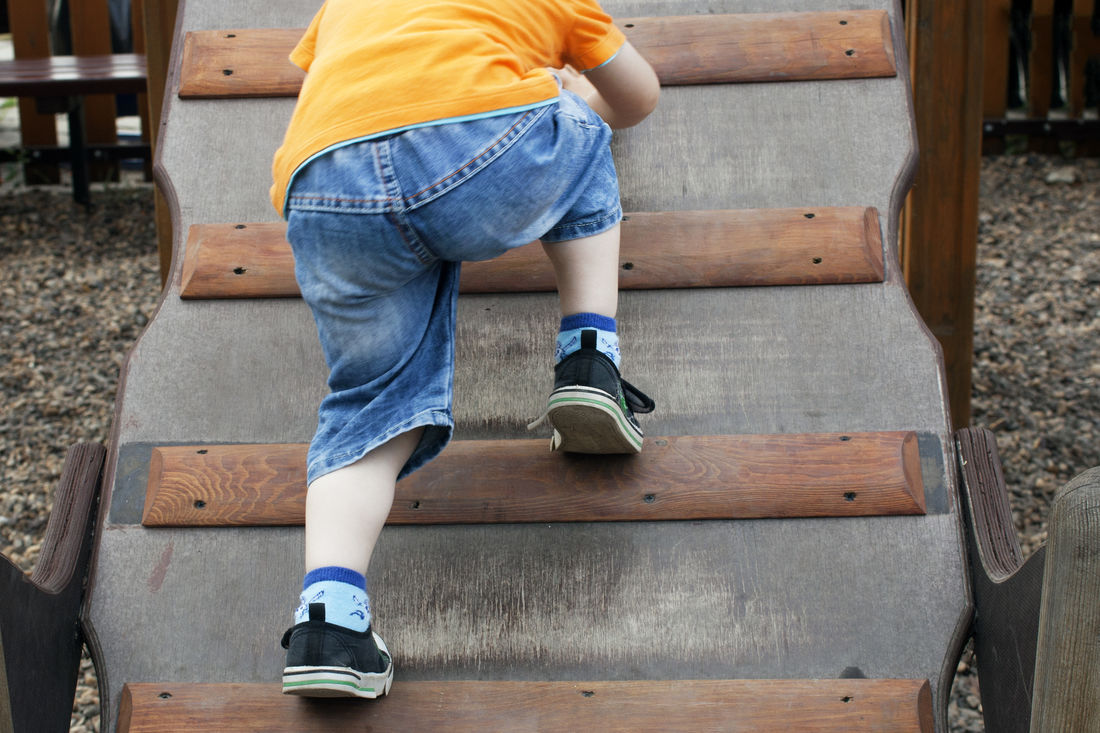Children need to move. Movement is important for health, cardiovascular fitness and brain development. Through movement, children are able to organise their world. By exploring three dimensional space through movement (climbing, running, touching, walking etc), children learn important concepts required for reading, maths and written expression.
Exploring the world through movement allows the child to learn to focus their eyes, listen to sounds, and co-ordinate eyes and ears through muscle control.
Movement stimulates the development of the large muscle groups of the torso and limbs. These need to be developed before the finer muscles of the hands develop. This is important as the larger muscles must be able to hold and stabilise the body to allow the child to have control over the fine motor movements of their hands and eyes when ready to learn.
Children develop the understanding of their physical world through their senses. All of the senses are stimulated by movement and touch. Touch is our most powerful and intimate form of communication.
Our sense of touch affects the development and expansion of our brains well into adulthood. It is a key component in growing, learning, communicating and living. Touch is the first of 5 senses to develop.
It is the primary means of early environmental learning in a newborn and is the strongest anchor for learning. Once the baby is able to move and explore their environment, movement becomes the primary sense that develops and stimulates learning.
Recent research reveals that the regions in the brain that are responsible for movement are the very same regions that are involved in higher level thinking. This suggests that there is a link between the ability to perform higher level thinking such as problem-solving, creating and designing, anticipating outcomes, curbing impulses, delaying gratification and giving a child plenty of free play outside involving whole body movements, including balance activities.
Encouraging children to move:
Children move instinctually and this should be encouraged daily and as often as possible. Games such as hopscotch, handstands and leap frog demand a high level of motor involvement, balance co-ordination, and motor planning.
Rolling down sand dunes or grassy slopes, swinging, roller skating, riding their bike or just spinning around in the park or garden will stimulate the vestibular system and thus assist with controlling activity levels in the brain.
Here is a list of examples of movements that are very effective for brain and body development:
1. Rolling over
2. Scooting
3. Crawling
4. Climbing
5. Balancing
6. Jumping
7. Twirling
8 Hanging upside down
9. Hopping
10. Dribbling a ball
11. Kicking a ball with alternating feet
Movement is the building block to brain development – it is free and fun and has so many positive benefits! The next time your child is tempted to reach for any remote control, why not take them to the park down the road?
